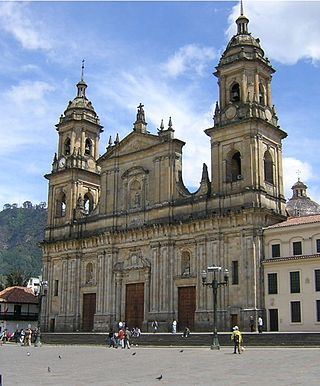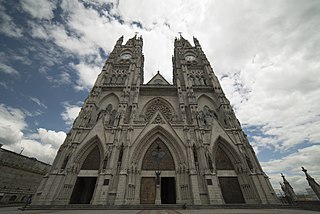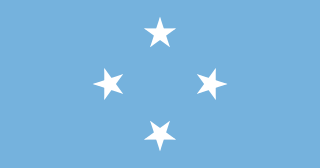Related Research Articles
These are articles that list people of a particular religious or political belief or other worldview.

Christianity is the predominant religion in the Philippines, with Roman Catholicism being its largest denomination. Sizeable minorities adhering to Islam, Indian religions, and indigenous Philippine folk religions are also present.

The predominant religion in Brazil is Christianity, with Catholicism being its largest denomination.

Christianity is the most widely professed religion in Argentina, with Roman Catholicism being its largest denomination. This historical background is very much due to the Spanish influence brought about through the newly conquered territories. However, affiliation with Protestant churches is increasing and immigration throughout the 20th century has brought other religions from various regions to Argentina.
Religion in Trinidad and Tobago, which is a multi-religious country, is classifiable as follows:

Religion in Taiwan is characterised by a diversity of religious beliefs and practices, predominantly those pertaining to the continued preservation of the ancient Chinese culture and religion. Freedom of religion is inscribed in the constitution of the Republic of China (Taiwan). The majority of Taiwanese people practice a combination of Buddhism and Taoism often with a Confucian worldview, which is collectively termed as Chinese folk religion.

Christianity is the predominant religion in Uganda. According to the 2014 census, over 84 percent of the population was Christian, while about 14 percent of the population adhered to Islam, making it the largest minority religion. Anglicanism and Catholicism are the main Christian denominations in the country.

Christianity is the dominant religion in Belize. The single largest denomination is the Catholic Church with about 40.1% of the population, a reduction from 49.6% of the population in 2000, 57.7% in 1991 and 61.9% in 1980, although absolute numbers have still risen. Other major groups include Pentecostal with 8.4% of the population up from 7.4% in 2000 and 6.3% in 1991, Seventh-day Adventists with 5.4% of the population up from 5.2% in 2000 and 4.1% in 1991. The following of the Anglican Church has been steadily declining, with only 4.7% of the population in 2010 compared to 6.95% in 1991. About 12,000 Mennonites live mostly in the rural districts of Cayo and Orange Walk. People who declared they belong to no religion make up 15.5% of the population in 2010, more than double their 2000 census numbers. 11.2% adhere to other religions which include the Maya religion, Afro-Caribbean religions, Mormons, Hindus, Buddhists, Muslims, Baháʼís, Rastafarians and others.

The predominant religion in Kenya is Christianity, which is adhered to by an estimated 85.5% of the total population. Islam is the second largest religion in Kenya, practised by 10.9 percent of Kenyans. Other faiths practised in Kenya are Baháʼí, Buddhism, Hinduism and traditional religions.

Religion in Colombia is dominated by various branches of Christianity and is an expression of the different influences in the Colombian culture including the Spanish, the Native Amerindian and the Afro-Colombian, among others.
Islam is the official religion in Kuwait, and the majority of the citizen population is Muslim.

When it comes to religion, the Ecuadorian society is relatively homogeneous, with Christianity being the primary religion. Catholicism is the main Christian denomination in the country. There are also small minorities of other religions.

Christianity is the predominant religion in Paraguay, with Catholicism being its largest denomination. Before the arrival of Spanish missionaries, the people residing in the territory of modern day Paraguay practiced a variety of religions.

Religion in Namibia is dominated by various branches of Christianity, with more than 90 percent of Namibian citizens identifying themselves as Christian. According to the government's survey, in 2013 up to 75% of the country was Protestant, including as much as 50% Lutheran.

Christianity is the largest religion in Cape Verde, with Roman Catholics having the most adherents. Different sources give varying estimates on the relative sizes of various Christian denominations. More than 94% of the population of Cape Verde is Christian, with almost 85% being Roman Catholic. About 5% of the population is Protestant. The largest Protestant denomination is the Church of the Nazarene. Other groups include the Church of the Nazarene, the Assemblies of God, Seventh-day Adventist Church, the Universal Church of the Kingdom of God, independent Baptists and various other Pentecostal and evangelical groups.

Christianity is the predominant religion in the Federated States of Micronesia and represents an integral part of the nation's identity.

Christianity is the largest religion in Nauru, with Nauru Congregational Church being the largest denomination, encompassing 35.71% of the population as of the 2011 census.

Christianity is the predominant religion in Tonga, with Methodists having the most adherents.

Christianity is the most widely professed religion in Croatia, representing 87.4% of the total population. A large majority of the Croatian population declare themselves to be members of the Catholic Church.

Mauritius is a religiously diverse nation, with Hinduism being the most widely professed faith. According to the 2011 census made by Statistics Mauritius, Hinduism is the major religion at 48.54%, followed by Christianity at 32.71%, followed by Islam 17.30% and Buddhism 0.18% in terms of number of adherents.
References
- 1 2 3 4 5 6 US State Dept 2022 report This article incorporates text from this source, which is in the public domain.
- ↑ "Palau Demographics Profile". indexmundi.com.
- 1 2 2020 Census of Population and Housing of the Republic of Palau (PDF) (Report). Vol. I Basic Tables. Koror, Palau: Office of Planning and Statistics. August 2022. Retrieved 2023-06-21.
- 1 2 3 Palau (2015). 2015 Census of Population, Housing and Agriculture Tables (PDF). p. 53. Retrieved 5 May 2021.
- ↑ "The Association of Religion Data Archives | National Profiles". Thearda.com. Retrieved 2023-06-03.
- 1 2 International Religious Freedom Report 2007: Palau. United States Bureau of Democracy, Human Rights and Labor (September 14, 2007). This article incorporates text from this source, which is in the public domain.
- ↑ Willard Price. Japan's Islands of Mystery. p. 111.
- ↑ Brigham Young University-Hawaii Campus (1981), p. 36
- ↑ Lawyers: Uighurs agree to go to Palau
- ↑ "Six former Gitmo detainees resettle in Palau". Dawn . Nov 1, 2009. Archived from the original on November 3, 2009. Retrieved 23 August 2023.
- ↑ Freedom House website, retrieved 2023-08-08